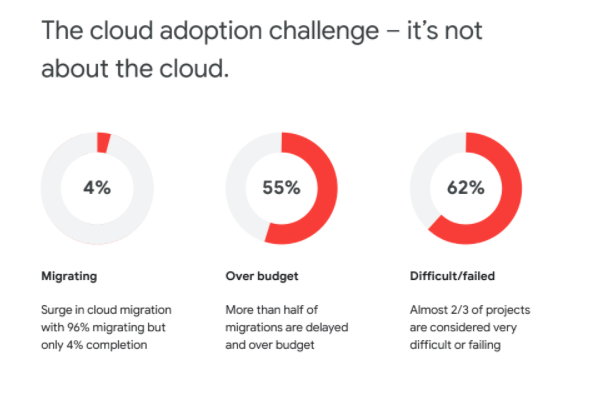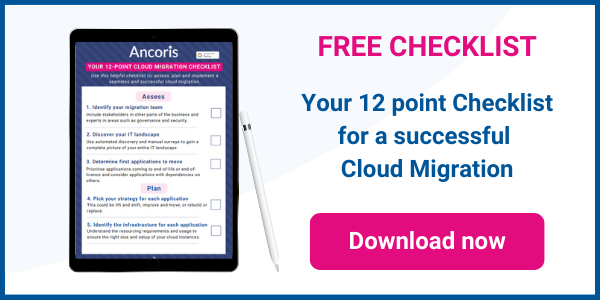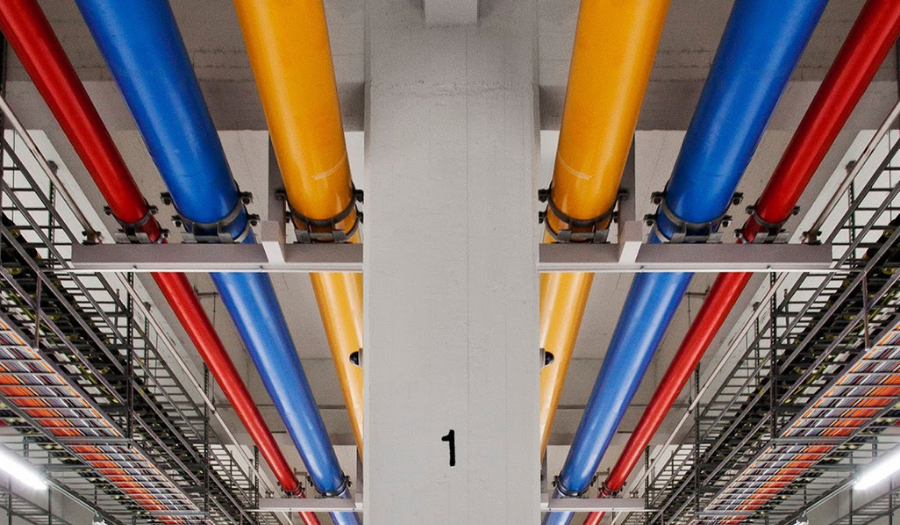Migrating your IT systems to the cloud can deliver significant benefits — but too many organisations are finding their migration projects get bogged down. A survey by Dimensional Research found more than half of migrations were delayed or over budget, while less than 5% had been completed.

It’s rarely the cloud technology itself that’s the issue. Rather, it’s that companies have picked the wrong workloads to migrate initially, or haven’t paid enough attention to issues like security and governance. Successful cloud migrations avoid these pitfalls by working through the four key areas of migration: Assess, Plan, Migrate and Optimise.
Follow our 12-point cloud migration checklist to ensure a seamless project.
1. Assess: identify your migration team
Don't forget to include stakeholders in other parts of the business and experts in areas such as governance and security.
2. Assess: discover your IT landscape
What applications do you have? Who is using them and how often? How critical are they to the business? What kind of resources do they consume and do they depend on any other applications? What SLAs, business continuity measures and security and compliance requirements are in place? To gain a complete picture of your entire IT landscape, you will probably need a mixture of surveying application owners and automated discovery.
3. Assess: determine first applications to move
This will depend on the business case for moving each application — Is an application reaching end-of-life or end-of-licence? Are there performance issues that are affecting business operations? — and whether there any dependencies between applications.
4. Plan: Pick your strategy for each application
This could be lift and shift, improve and move, or rebuild or replace.
5. Plan: identify the infrastructure for each application
Not only do you need to determine which resources will be needed — compute, network, security and automatic scaling and provisioning — but also how much of each resource you’ll need. On-prem systems are often over-provisioned, so it’s vital you understand your actual usage and rightsize your cloud instances.
6. Plan: identify key migration capabilities for each application
This includes pre-migration testing and validation, the ability to roll back to on-prem operations, monitoring during the migration and how you’ll handle cutover.
7. Plan: decide on your migration solution
There are two main options and the capabilities you determined in the previous step will influence your decision. Replication-based migration will “copy and paste” an entire application and data to the cloud before cutover. Streaming-based migration will copy an initial critical subset of data, so you can begin testing and running the application in the cloud, while the rest of the data is copied in the background and the cloud and on-prem data is kept synchronised. You also need to choose between agent-based and agentless solutions.
8. Plan: create a migration plan
Do this for each application and its data. Map out where each app will sit within the target environment and establish user and service identities for each.
9. Plan: test your plan
This should confirm that data will be migrated and synchronised correctly, and that you’ve rightsized your resources to deliver the required performance while keeping costs to a minimum. You should also use the testing step to validate security controls and to determine how much time the actual cutover will take. The plan should be updated with any necessary changes before you move to the next step.
10. Migrate: migrate your applications
Do, this using the plan you just created. It’s best to adopt a phased approach, validating the work done in each phase before you move on and using any lessons learned in subsequent phases.
11. Optimise: monitor performance
Take care to adjust instance types and size based on actual performance. This can include implementing automations to speed up processes and reduce the risk of human error.
12. Optimise: add management tools
The tools will either be provided by the cloud vendor or from third-party vendors — to allow your IT team to manage security, performance, availability, backup, disaster recovery and costs.
As you can see, a successful cloud migration is largely about good preparation. An experienced cloud partner like Ancoris can support you as you work through these steps, with proven methodologies, powerful tools and deep technical skills that have been developed during the delivery of numerous successful application modernisation projects.
Working with a Google Cloud Platform Premier Partner
As a leading Google Cloud Service Partner, we have considerable experience with Google Cloud Platform, both assisting clients to future proof their business with cloud infrastructure.
Cloud adoption is not just about agility and cost optimisation — it’s about building the very foundations you need to continuously innovate and stay ahead. A cloud-first architecture using Google Cloud Platform not only modernises your infrastructure but unlocks a whole new world of digital freedom and opportunity.
Our onboarding methodology will help you realise value in weeks, not months so you can save costs and increase agility.
If you’d like to find out more about how we can help you, why not take a look at some of our customer success stories or talk to the experts in our Google Cloud Platform team.
